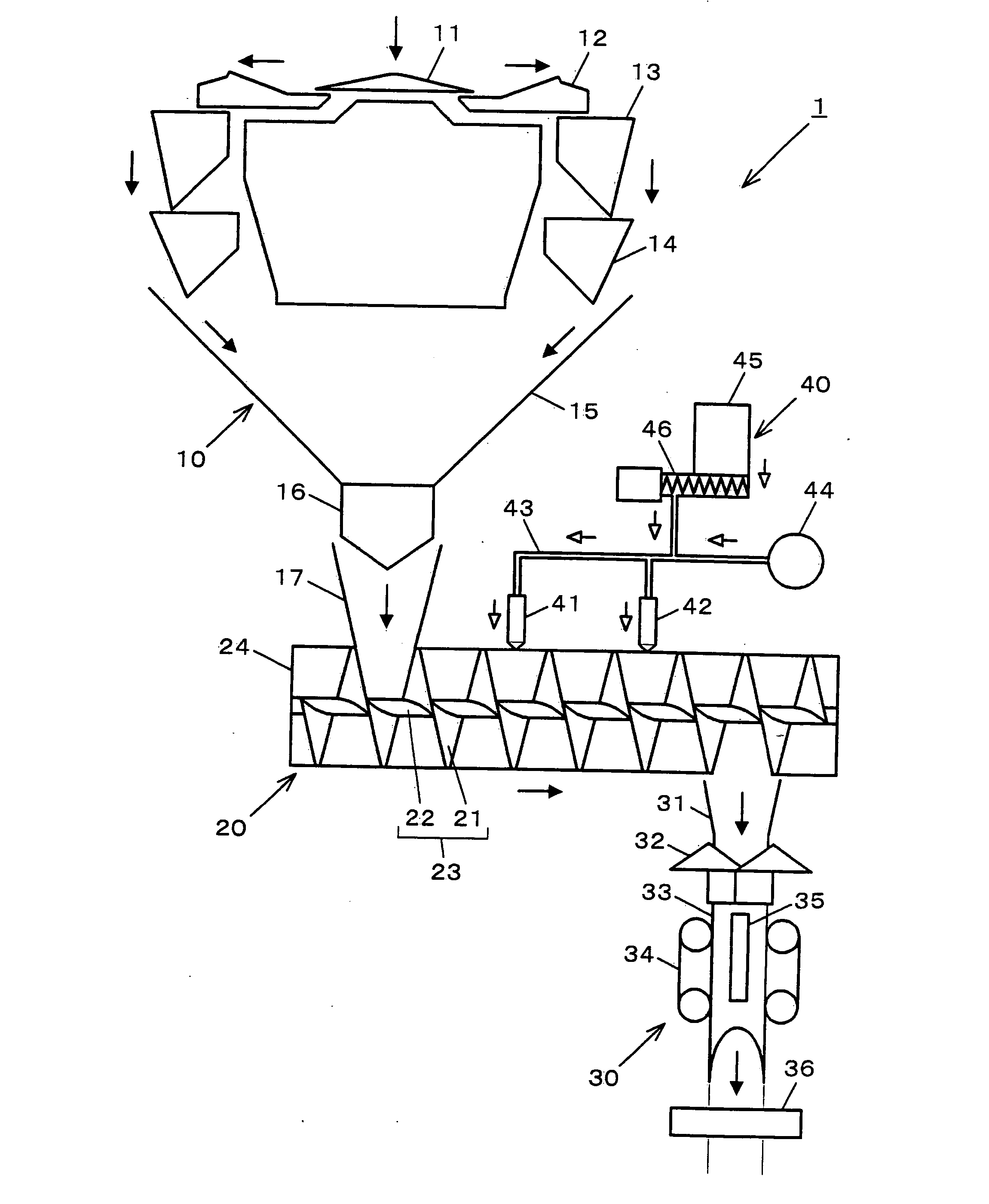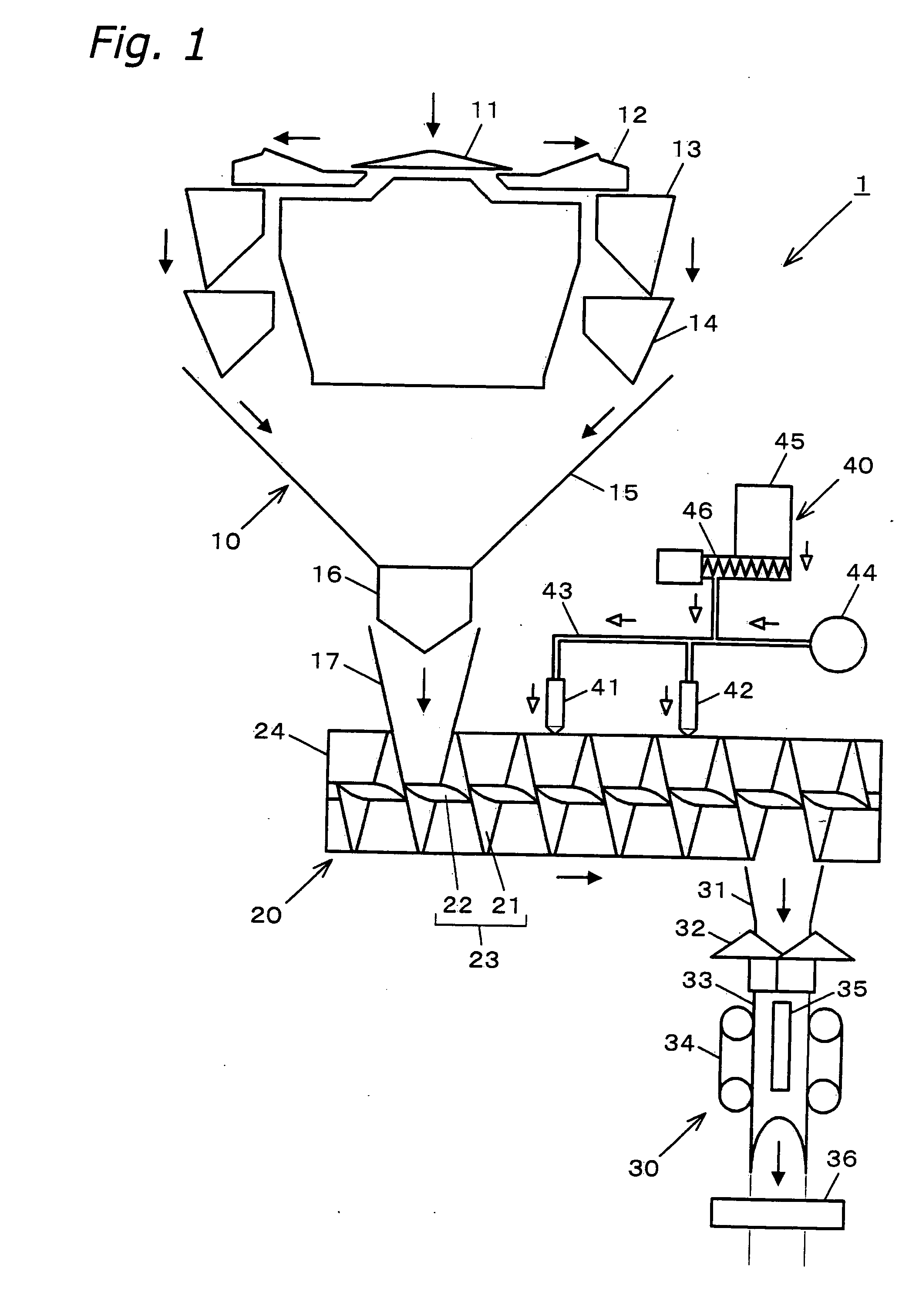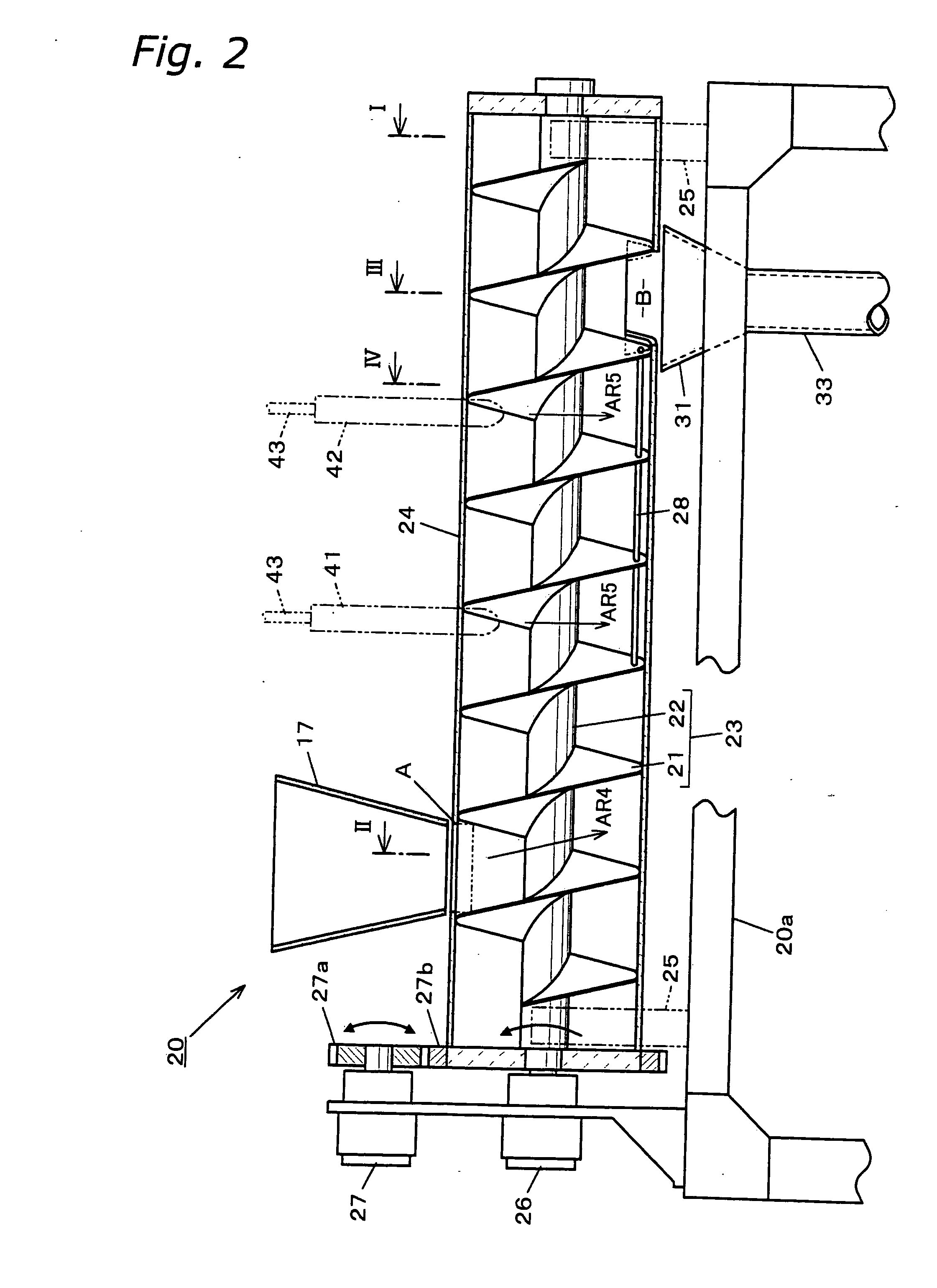Seasoning device and commodity production system with the device
a technology of commodity production system and seasoning device, which is applied in the direction of applications, sweetmeats, instruments, etc., can solve the problems of short stay time, processing time, and virtually impossible to adjust the seasoning processing time for each individual article in the tumbler
- Summary
- Abstract
- Description
- Claims
- Application Information
AI Technical Summary
Benefits of technology
Problems solved by technology
Method used
Image
Examples
first embodiment
[0113] FIG. 1 is a block diagram of a product manufacturing system 1 provided with a seasoning apparatus 20 according to the present embodiment. The black arrows show the direction of flow of the articles, and the white arrows show the direction of flow of the compressed air and the seasoning. The product manufacturing system 1 weighs, seasons, and packages snacks like potato chips, and includes, in sequence of the direction of the flow of the articles from the upstream side, a weighing apparatus 10, the seasoning apparatus 20, and a packaging apparatus 30.
[0114]
[0115] The weighing apparatus 10 is a well-known combinational weighing apparatus. Namely, a feeder like a belt conveyor and a bucket conveyor (not shown) supplies a large quantity of articles onto a dispersion table 11 where the articles are dispersed and supplied to a plurality of pool hoppers 13 . . . 13 by a plurality of feeders 12 . . . 12, and are then weighed by a plurality of weigh hoppers 14 . . . 14. Further, each...
second embodiment
[0159] The first embodiment performed all processing of an article group of a single package unit quantity weighed by the weighing apparatus 10 as a single unit. In other words, the entire quantity of the article group X weighed by the weighing apparatus 10 is supplied (for each single package unit quantity) to a single section of the seasoning apparatus 20, transported, seasoned, and transferred to the packaging apparatus 30. In contrast, in the second embodiment, the article group of a single package unit quantity weighed by the weighing apparatus 10 is intentionally divided into a plurality (of article groups), and those divided article groups are supplied as individual units to the sections of the seasoning apparatus 20, transported, seasoned, and transferred to the packaging apparatus 30. However, as discussed later, because it is necessary to once again collect the plurality of article groups into a single article group (into a single package unit quantity) when transferring t...
third embodiment
[0164] In the first embodiment, it is also acceptable to electrically charge at least one of the article group X and seasoning, and to adhere the seasoning to the article group X using that electrostatic function. The seasoning process is thereby completed within a short time period, and seasoning is performed more uniformly without any unevenness. In addition, the remaining unadhered seasoning is reduced (the seasoning adheres with a good yield). However, when both the article group X and the seasoning are electrically charged, they must be mutually charged with differing polarity.
[0165] FIG. 10 shows an electrical charging apparatus 50 capable of being used in the third embodiment. The electrical charging apparatus 50 is arranged between the timing hopper 16 and the intake chute 17 of the weighing apparatus 10, and has a pair of opposing electrodes 51, 52 that interpose the drop pathway of the weighed article group X. One electrode 51 is connected to a high-voltage power supply 53...
PUM
 Login to View More
Login to View More Abstract
Description
Claims
Application Information
 Login to View More
Login to View More - R&D
- Intellectual Property
- Life Sciences
- Materials
- Tech Scout
- Unparalleled Data Quality
- Higher Quality Content
- 60% Fewer Hallucinations
Browse by: Latest US Patents, China's latest patents, Technical Efficacy Thesaurus, Application Domain, Technology Topic, Popular Technical Reports.
© 2025 PatSnap. All rights reserved.Legal|Privacy policy|Modern Slavery Act Transparency Statement|Sitemap|About US| Contact US: help@patsnap.com



